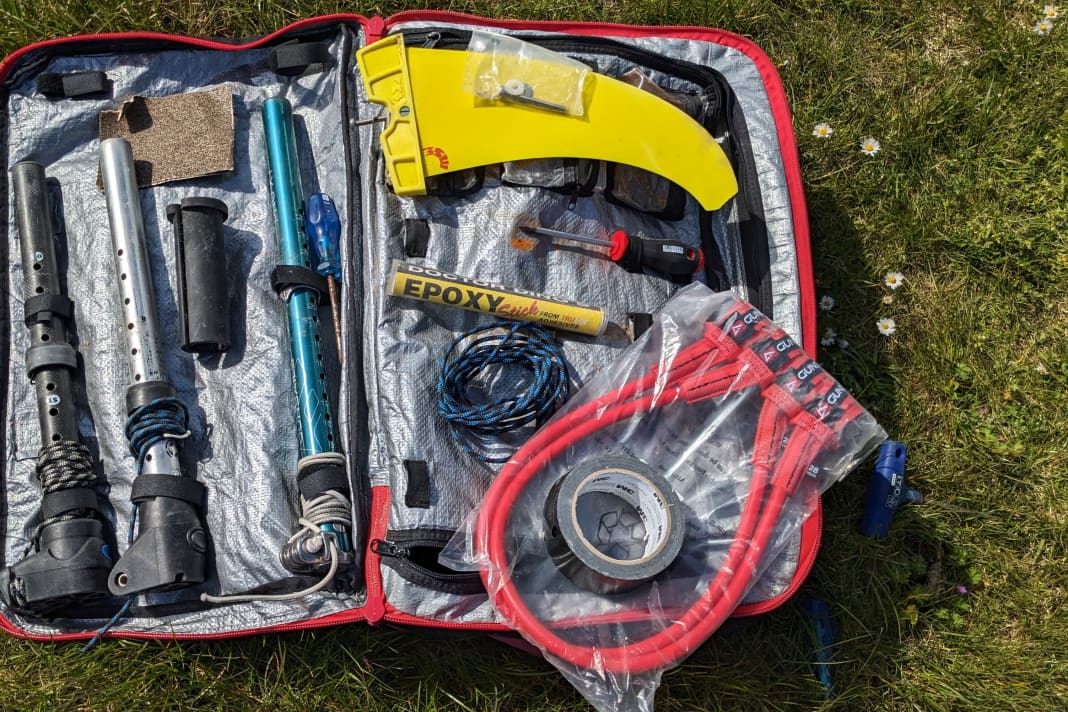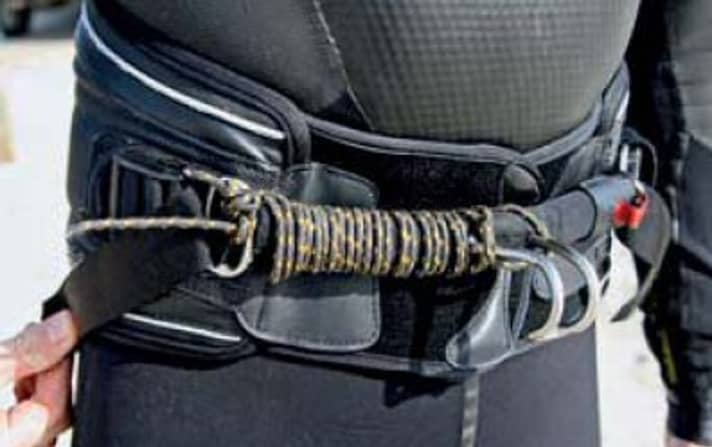





Repair Stick/Dr Ding
A careless movement when unloading, a sudden gust or a crash with stones on the shore: if there is a hole in the laminate, water can quickly penetrate the board. To save the session, a repair stick (such as the from M2) in your luggage. You can cut off a piece of this and mix the hardener and filler by kneading. The mixture then only needs to be pressed onto the damaged area, and after a short curing time you can get back on the water!
A good addition to this are the Repair kits from Solarez. These harden well even at low temperatures, all you need is a little sun. Also available for neoprene!
Duct tape
Can do everything, is always needed: whether for quickly patching small tears in sails or neoprene, for fixing plasters and bandages or countless other applications: Duct tape belongs in every surfer's car!
Spare bulbs
The classic: a loud bang when trimming the luff and the old rope is torn. For such cases, you should always Spare bulbs must be of the right thickness. Ideally, you should not wait until it is too late to discover worn-out areas, but replace the ropes beforehand. A regular check is therefore mandatory, including for the ropes on the outhaul and the front piece of the boom. After all, a torn rope during rigging is annoying, and a tear on the water can lead to a long swim or, in the worst case, to a call-out by the sea rescue service! In such cases, a sufficiently long piece should always be carried on the water, for example on the harness hook.

Fin screw & US box plate
Small, but essential: if you want to Fin screw can forget the session - at least with the optimally selected material. The same applies to the small plate that is fiddled into the box with US box fins. Such small parts are quickly lost in the meadow or in the sand. Replacements should therefore be in your surf bag or car - and usually fit other boards too.
Emery paper
Banal, but important: a little Emery paper (not too coarse-grained) is very helpful for quickly sanding smaller quirks on the fin. Even if the board has a quirk and Dr Ding is to be used, the area can be prepared with a little sandpaper.
RDM adapter
If you use RDM masts, you will need an adapter for the front piece on most booms. With many manufacturers (e.g. GunSails), this can be clicked in firmly. However, if you switch between RDM and SDM or the adapter is not firmly attached to the front piece, it can get lost. A standard adapter (e.g. from Ascan), which fits all booms and "simulates" an SDM mast, can save the session in such cases.
Screwdriver
Even without do-it-yourself ambitions, a Screwdriver for windsurfing: A suitable tool is required at least for attaching the fin. A screwdriver is also required to move loops and can also be used as a trimming aid. And when it comes to assembling a foil, many even reach for the battery-powered version. Phillips screws are the most common, but some manufacturers also use Torx or Allen screws.
harness line
Over time, harness lines can also wear through, or the attachments on the boom can slowly wear out during assembly and disassembly. A pair of spare ropes is therefore advisable. Make sure you choose the right length! You can find a large selection of harness lines, for example, at Online surf shop.
Adjustment ring for the extension
Many extensions have a uniform ring on which the safety pin dangles with a thin thread. During assembly and disassembly, the top of the ring can slip off and get lost in the sand or on the grass. If you have such an extension, you can use one to be on the safe side. Replacement ring pack.
weed fin
Not essential for everyone, but if you are travelling on the Baltic Sea or in the south of France, there is no getting around a weed fin. It is therefore advisable to have a suitable fin in your luggage. Even if you have to make concessions in terms of riding characteristics, you will always be faster than with tufts of weed on the slalom spine. There are now also numerous seaweed fins for multifin boards in the wave sector >> e.g. available here.

